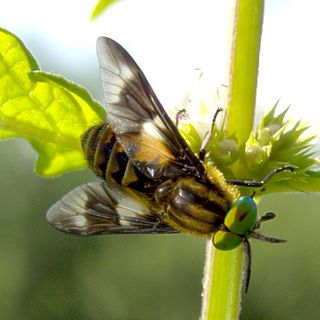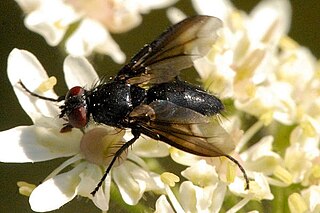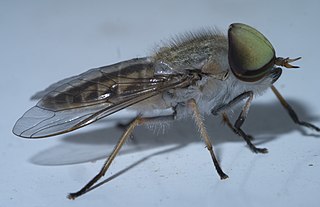
Superfamily Tabanoidea are insects in the order Diptera.

Toxophora is a genus of flies belonging to the family Bombyliidae (bee-flies). There are 47 described species, distributed throughout the world, although they are most abundant in Southwestern United States and western Mediterranean. World catalog of bee flies They are strange, stout, robust flies with a hunchbacked form, with a body length of 6–12 mm and wings 4 to 7.5mm. Most species are black with banding or spots.

Winthemia is a genus of flies in the family Tachinidae.
Lespesia is a genus of flies in the family Tachinidae.

Dexiinae is a subfamily of flies in the family Tachinidae.

Dexiini is a tribe of flies in the family Tachinidae.

Exoristinae is a subfamily of flies in the family Tachinidae. Most species are parasitoids of caterpillars.

Tachininae is a subfamily of flies in the family Tachinidae.

Tabaninae is a subfamily in the family Tabanidae commonly known as horse flies. There are more than 3000 described species in Tabaninae.

Cuterebra fontinella, the mouse bot fly, is a species of New World skin bot fly in the family Oestridae. C. fontinella is typically around 1 cm (0.39 in) in length with a black and yellow color pattern. C. fontinella develops by parasitizing nutrients from its host, typically the white-footed mouse. C. fontinella has even been known to parasitize humans in rare cases. Individuals parasitized by C. fontinella will develop a large bump on the skin that is indicative of parasitization.










